Kon-Tiki, 1947
The expedition was a result of the theory Heyerdahl had been pondering ever since his stay on Fatu Hiva in 1937.
On 28 April 1947, a raft made of balsawood carrying six men and a parrot sailed out of Callao, Peru.
Its skipper was the then 33-year-old Thor Heyerdahl, and their destination was Polynesia.
The expedition was a result of the theory Heyerdahl had been pondering ever since his stay on Fatu Hiva: this group of islands in the South Pacific could not have been populated solely by peoples from the west. It must also have been populated by indigenous South Americans. Among the circumstantial evidence Heyerdahl pointed to, was the story of Kon-Tiki Viracocha, a native chief who, legend has it, sailed west from Peru into the sunset on a large balsawood raft.
Heyerdahl had presented his theory to a group of leading American anthropologists in the spring of 1946, but they gave him the cold shoulder. One of them, Herbert Spinden, even went so far as to challenge Thor:
“Sure, see how far you get yourself sailing from Peru to the South Pacific on a balsa raft!”
Heyerdahl took the challenge to heart and immediately set about planning the expedition that would take him and a crew across the Pacific Ocean on his own balsa raft.
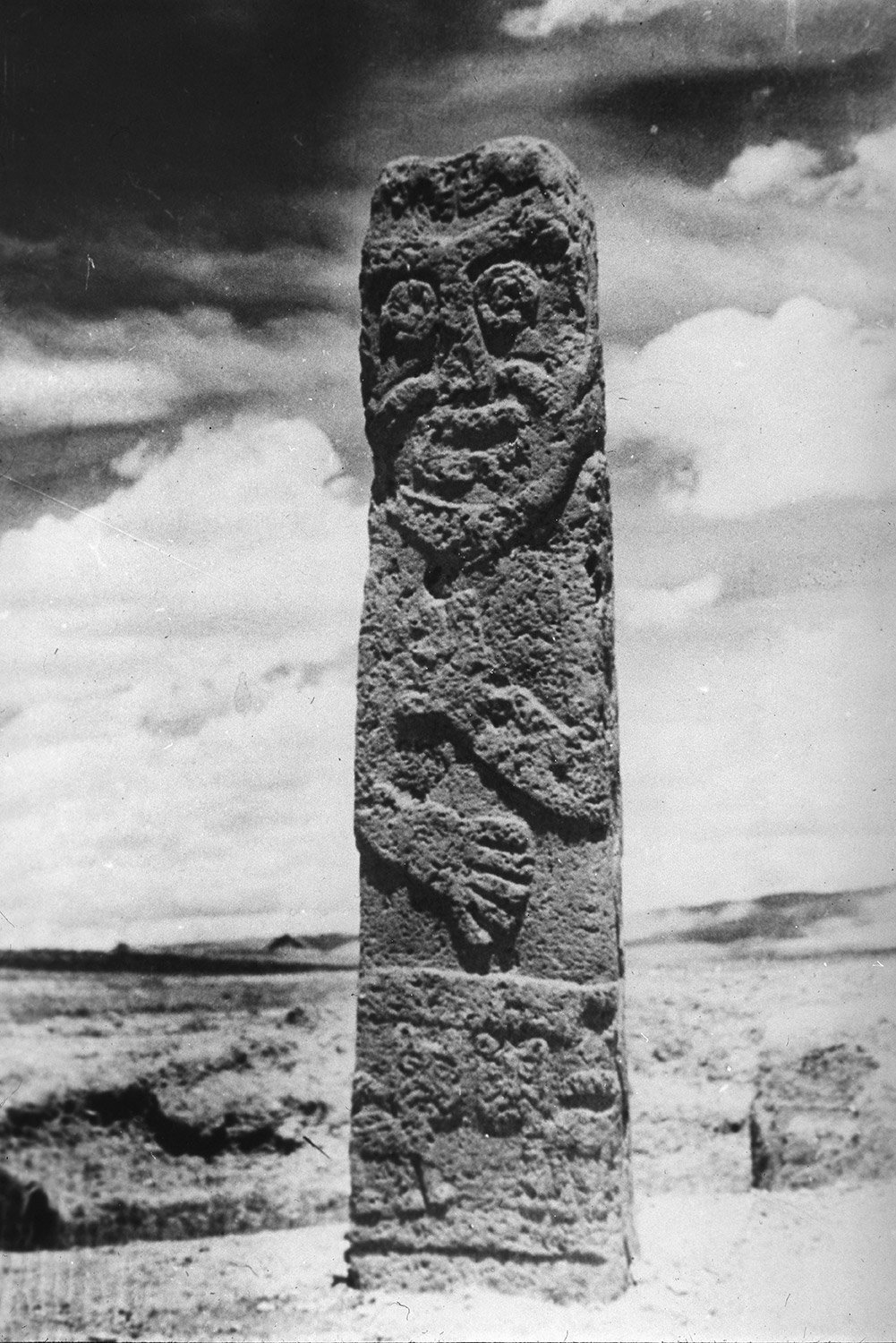
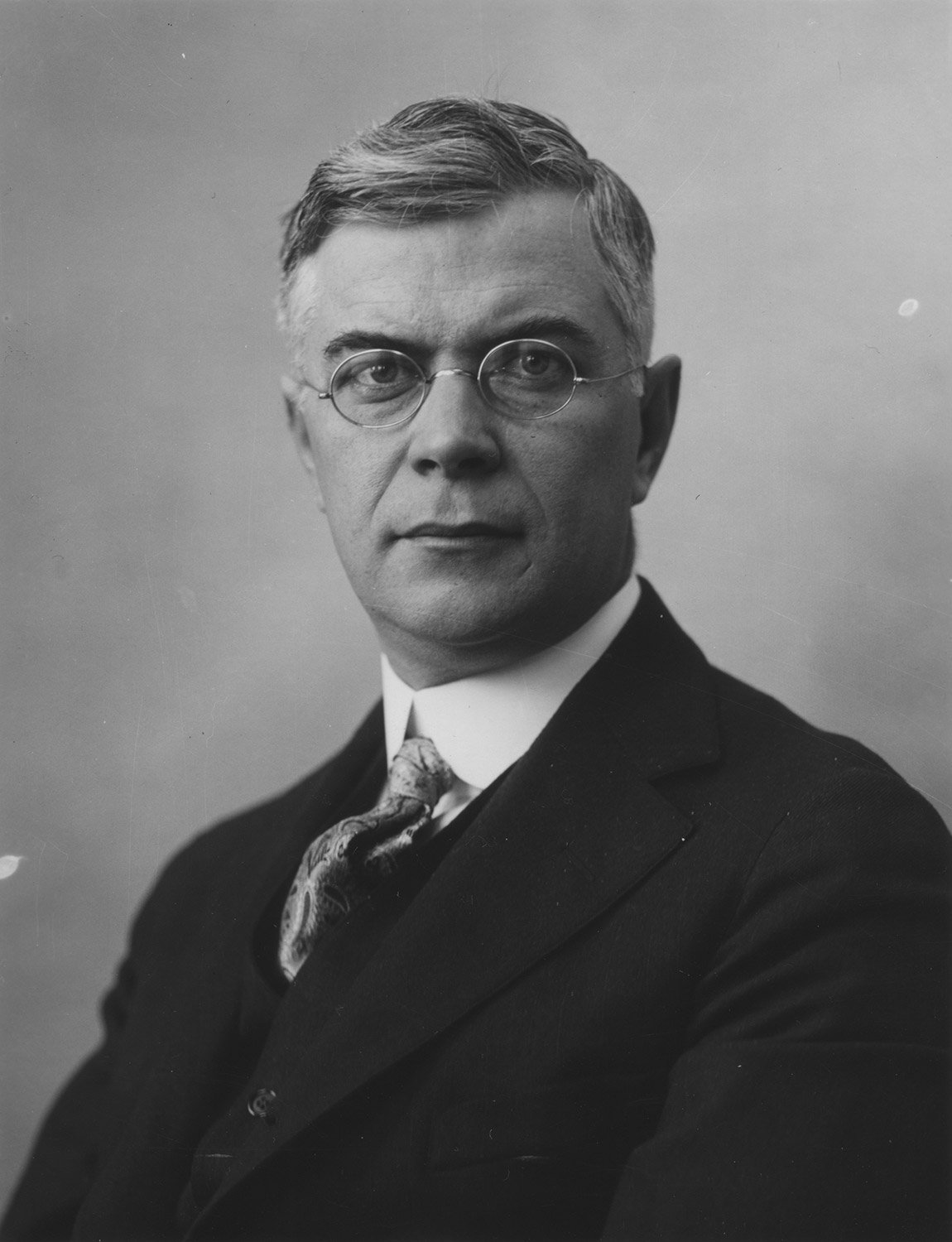
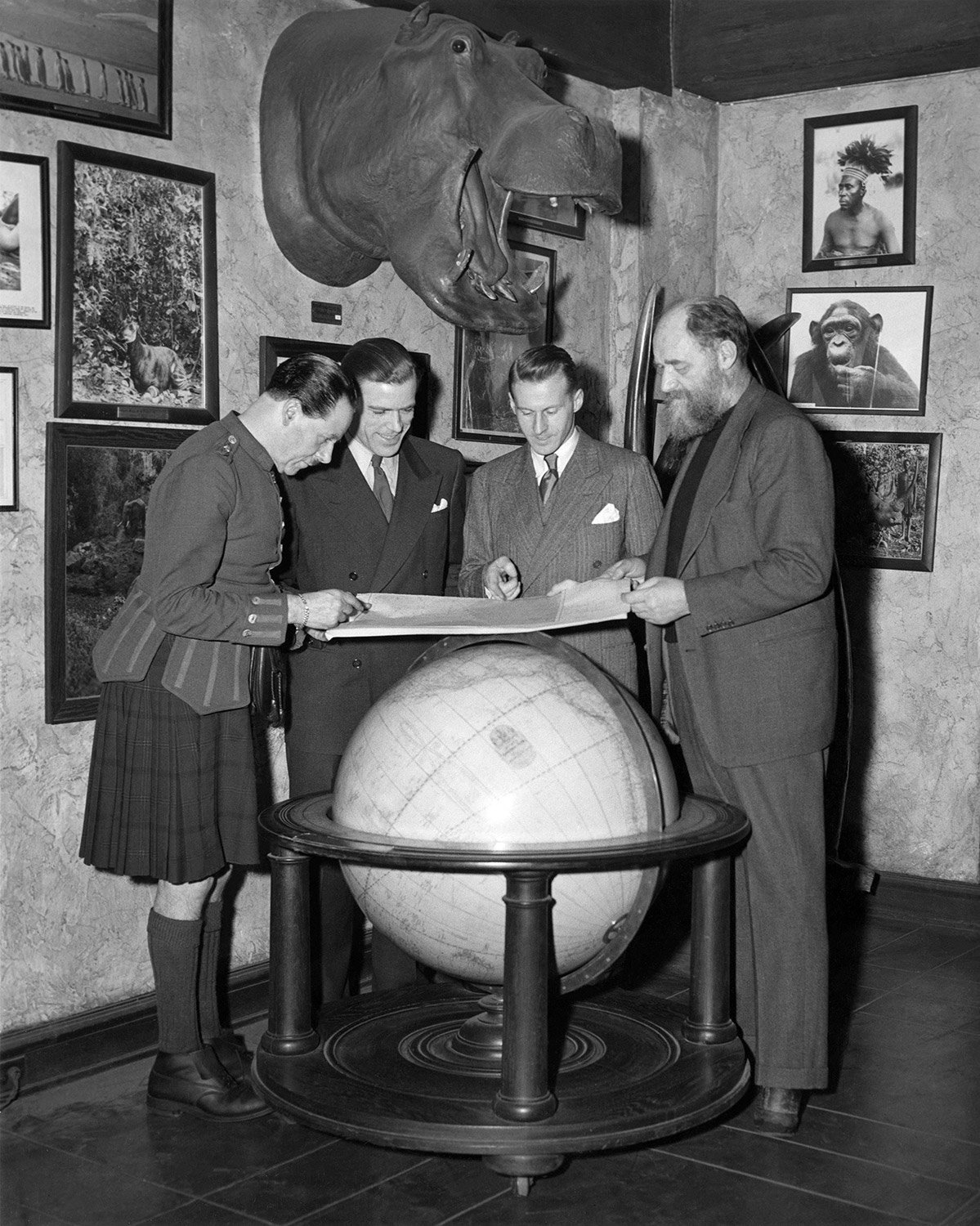
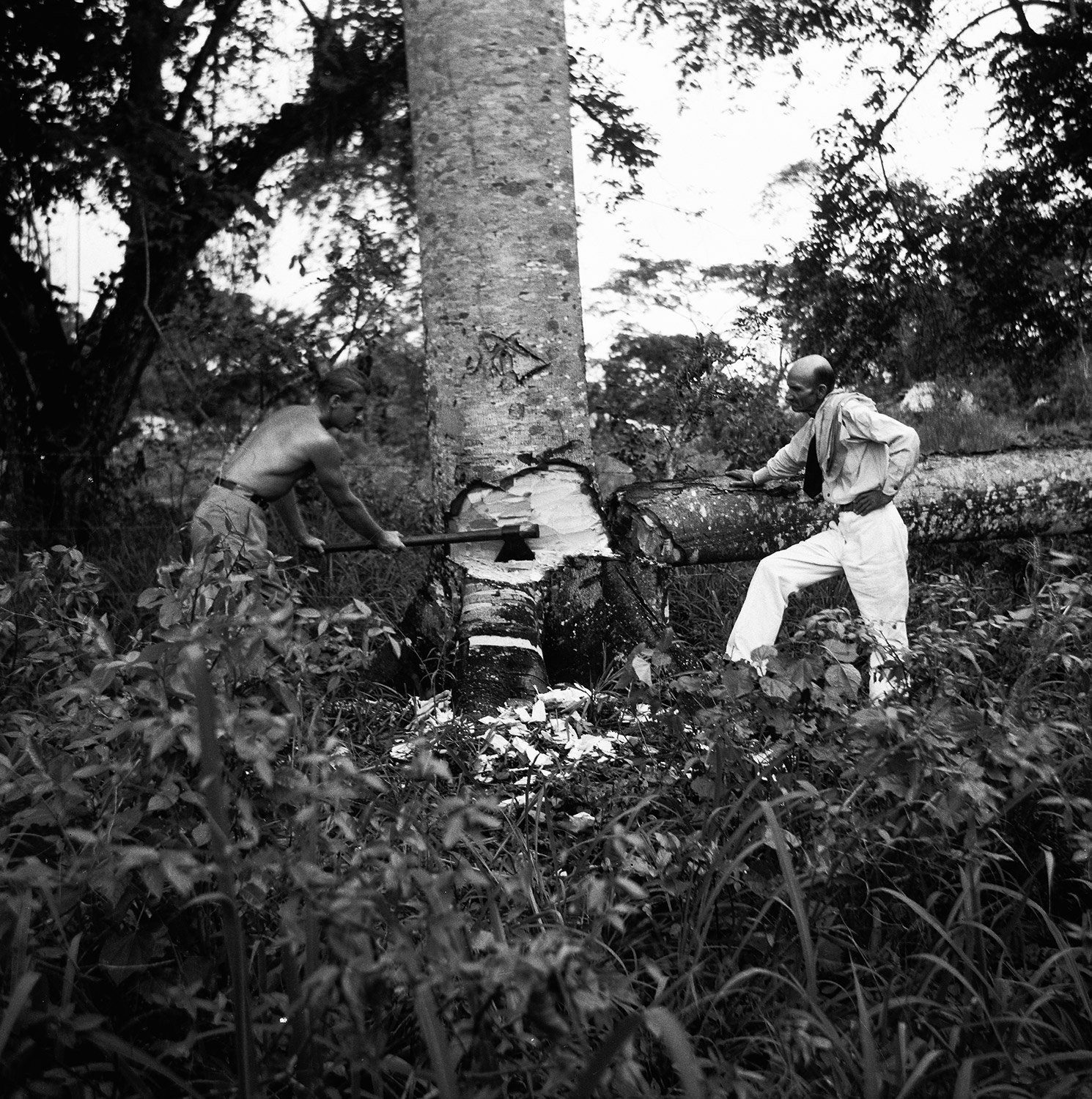
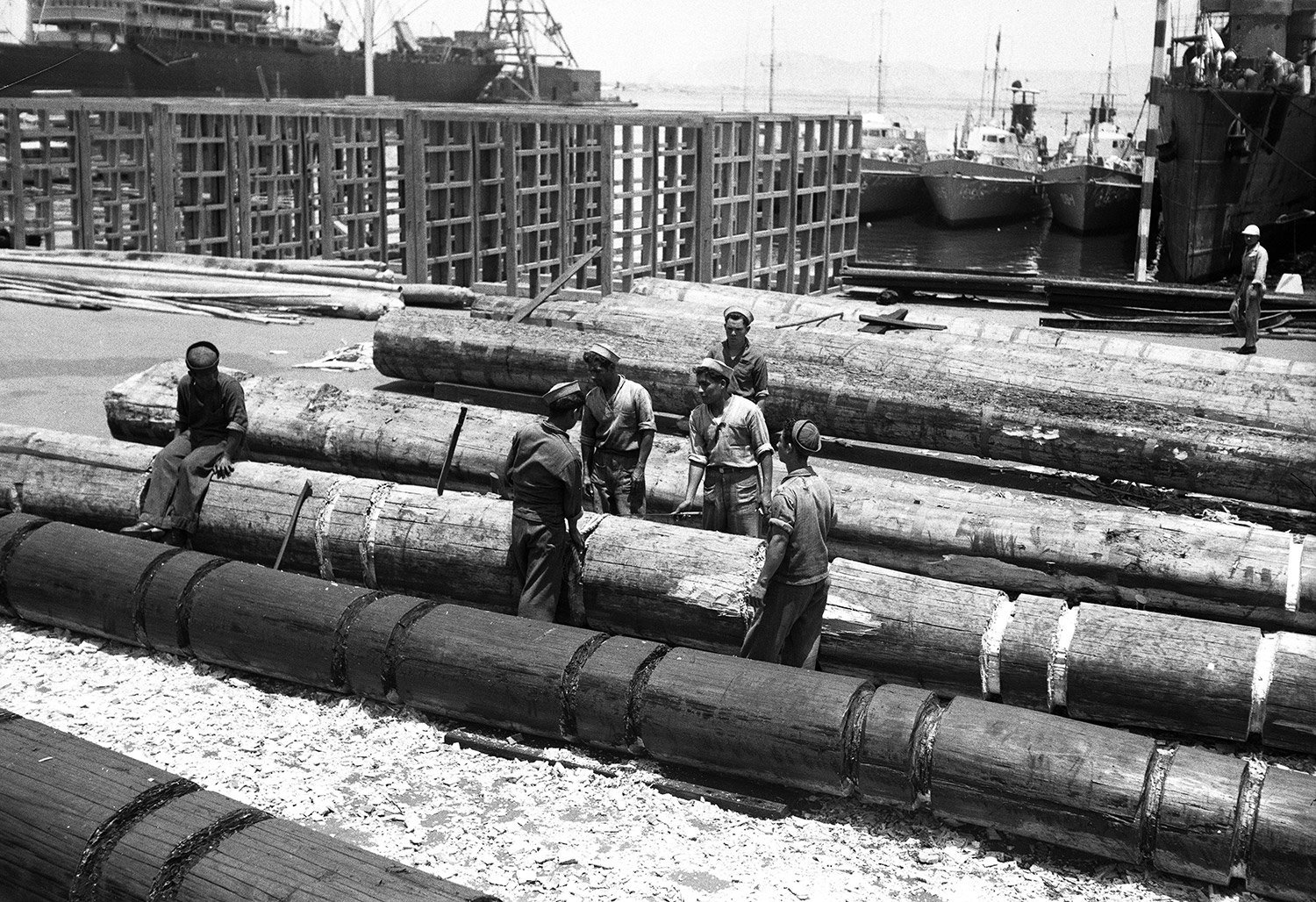
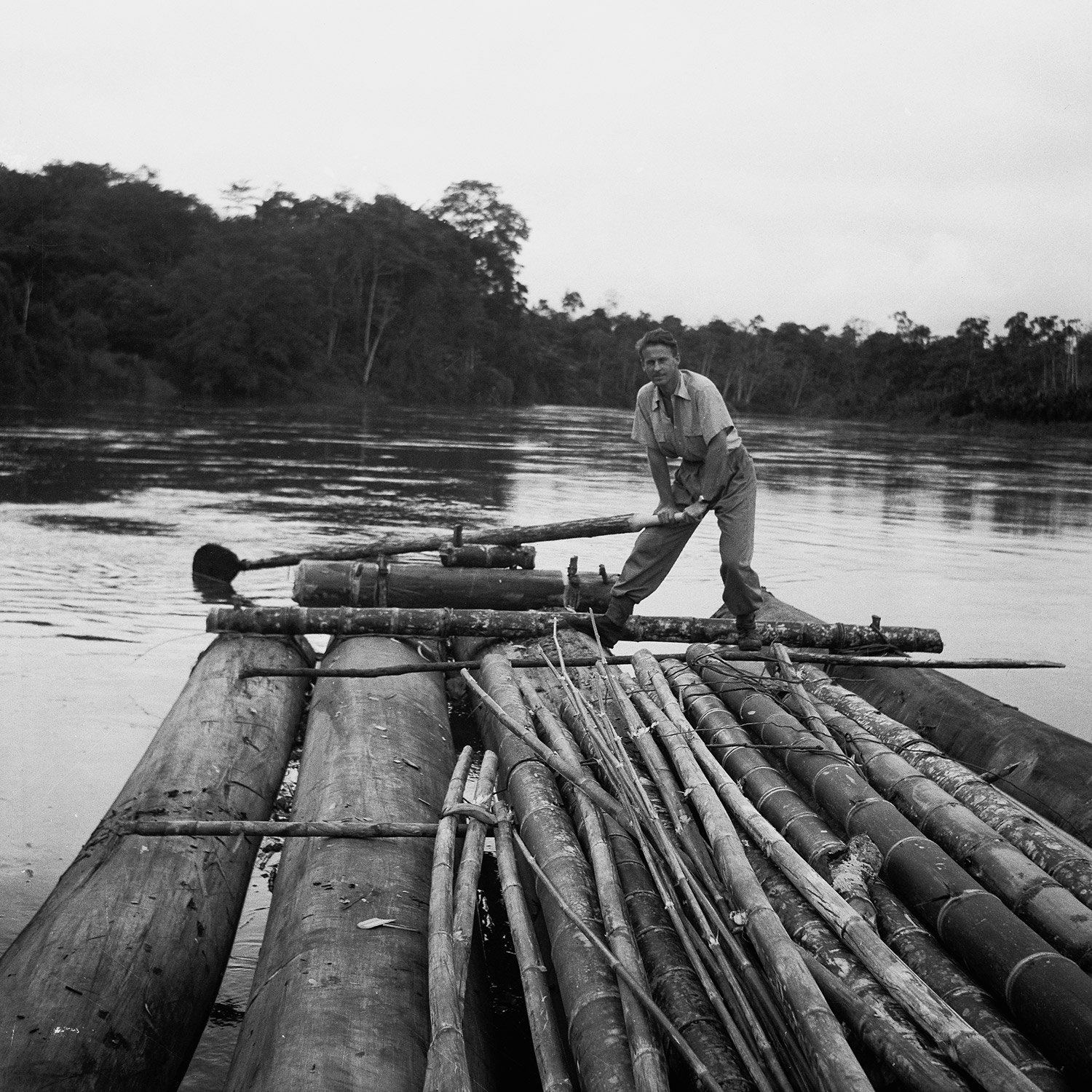
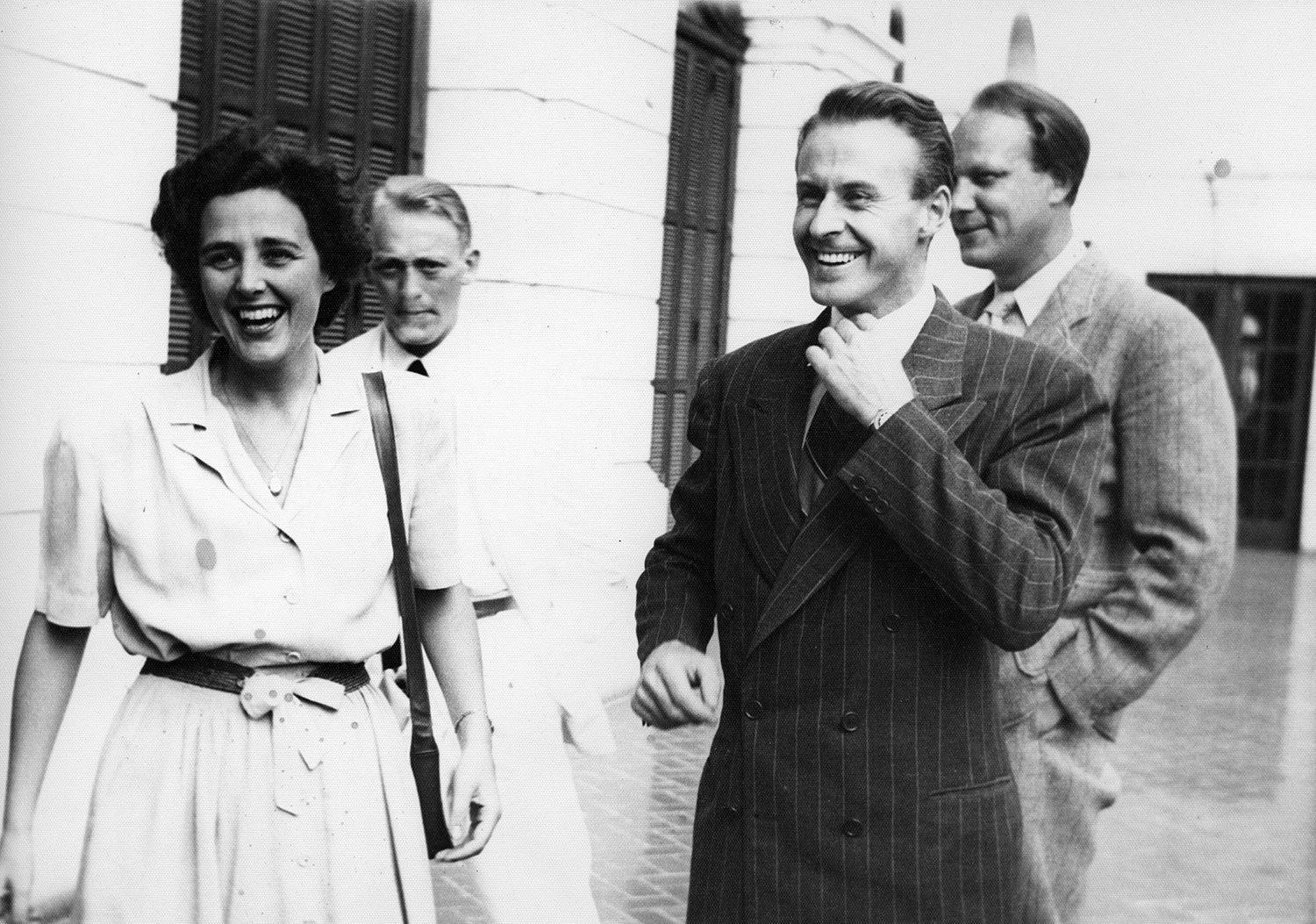
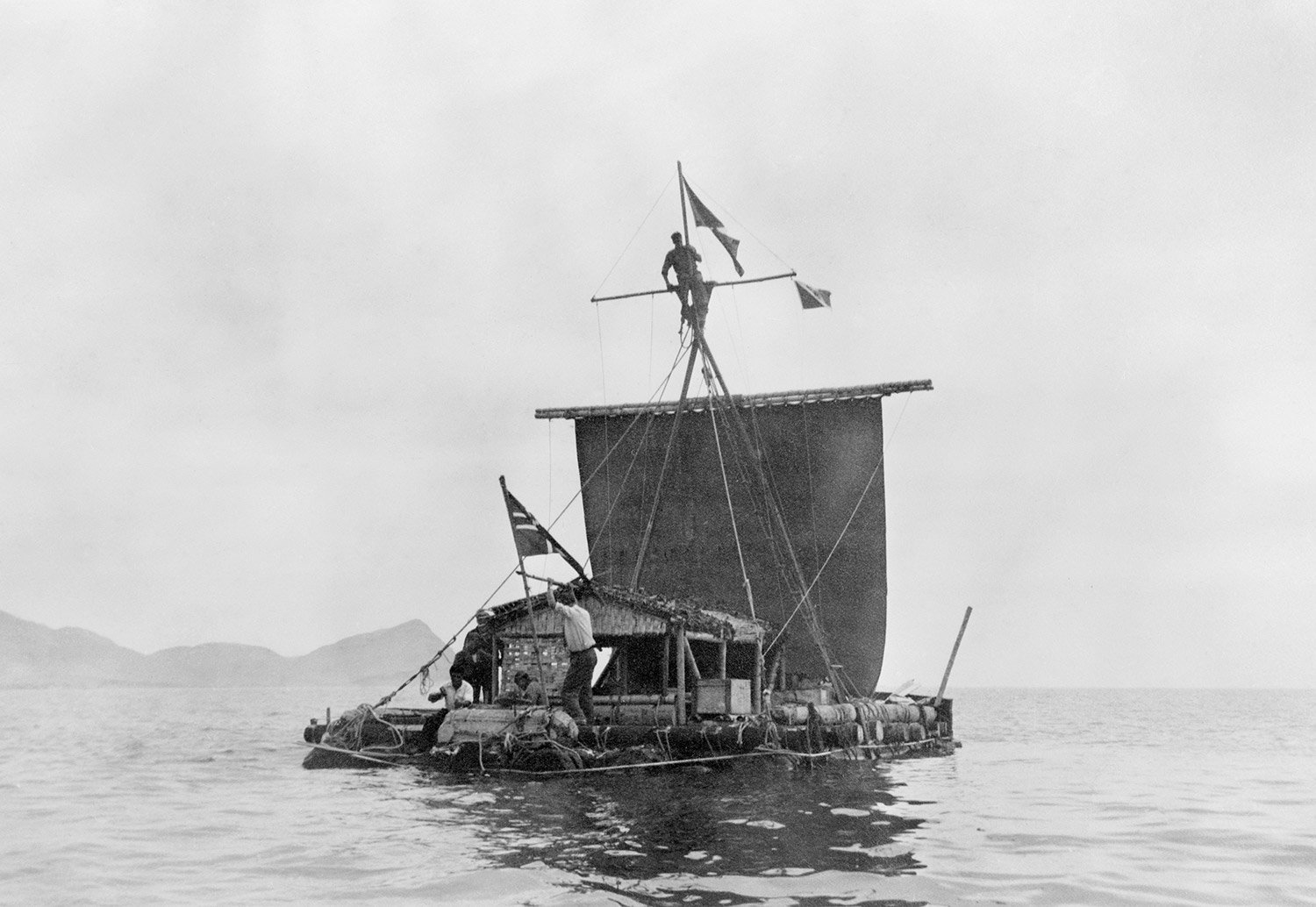
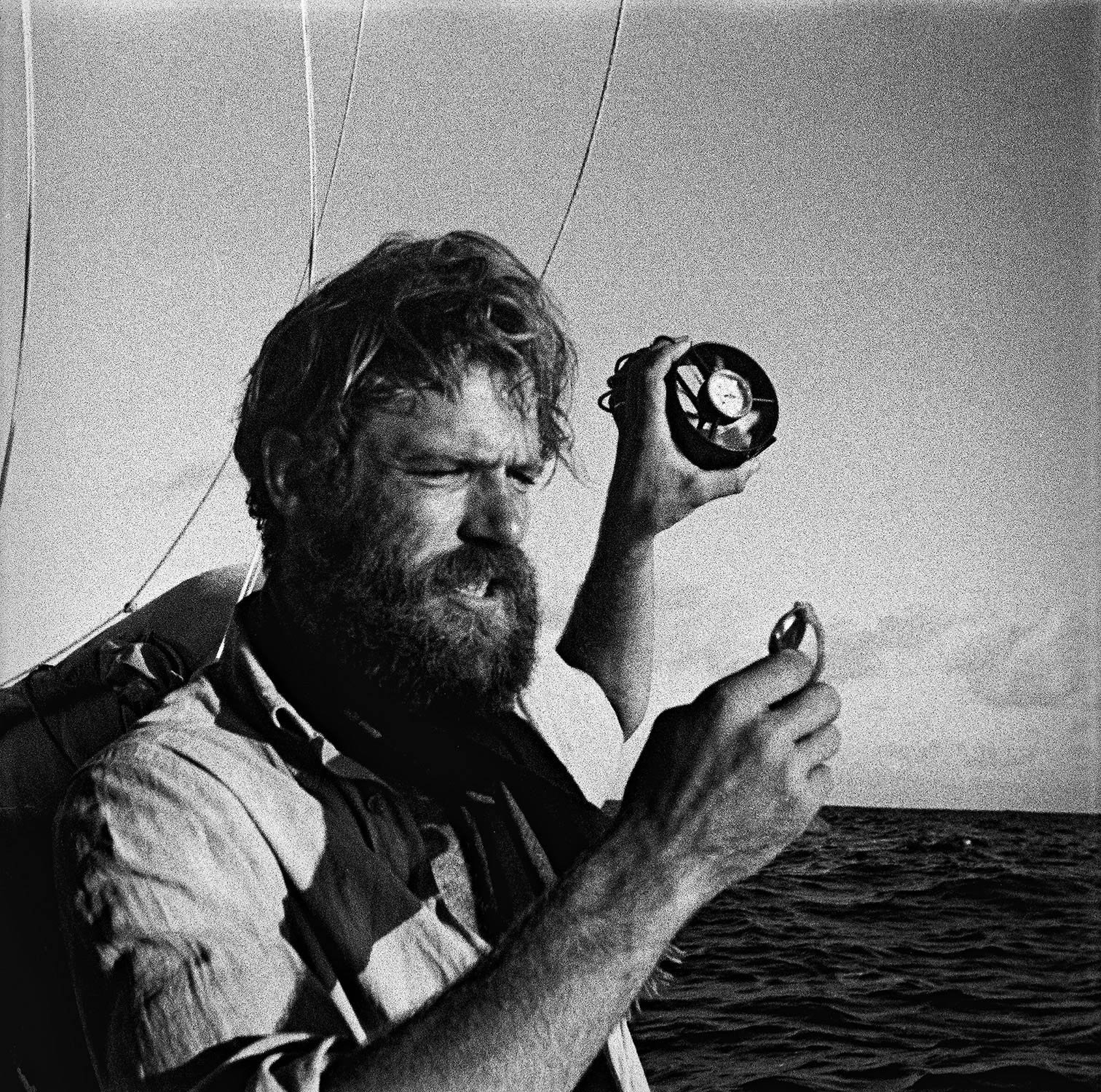
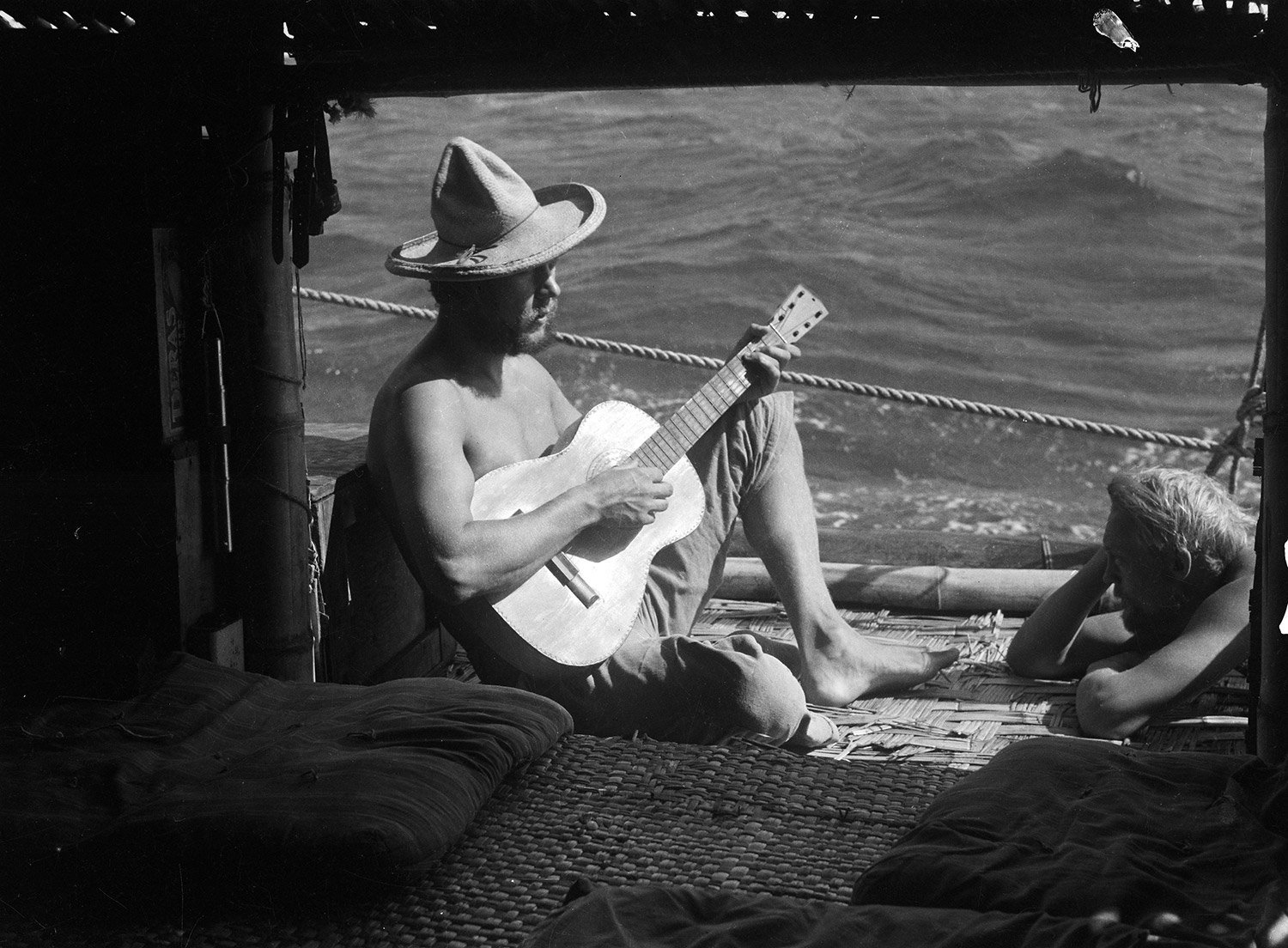
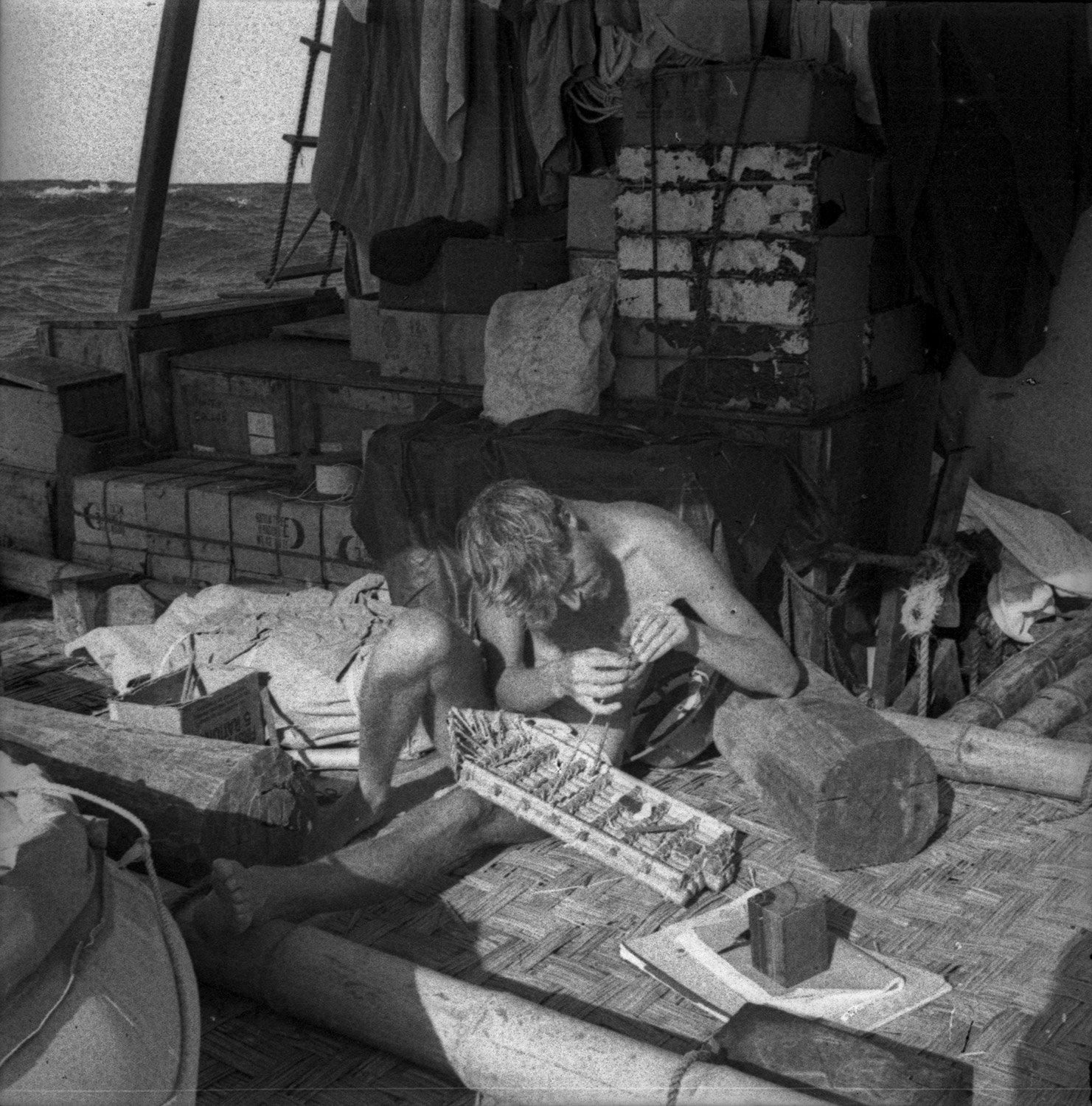
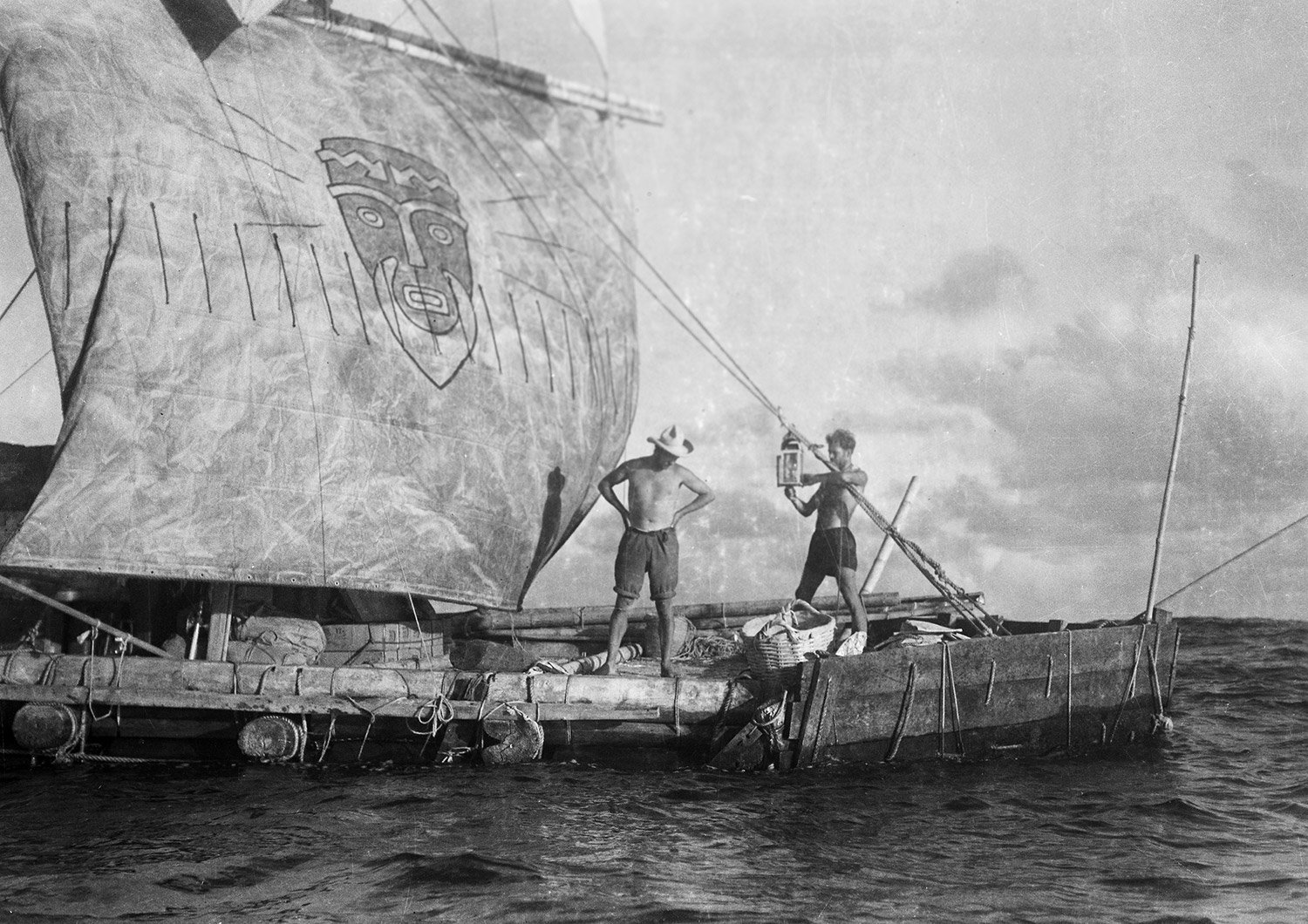

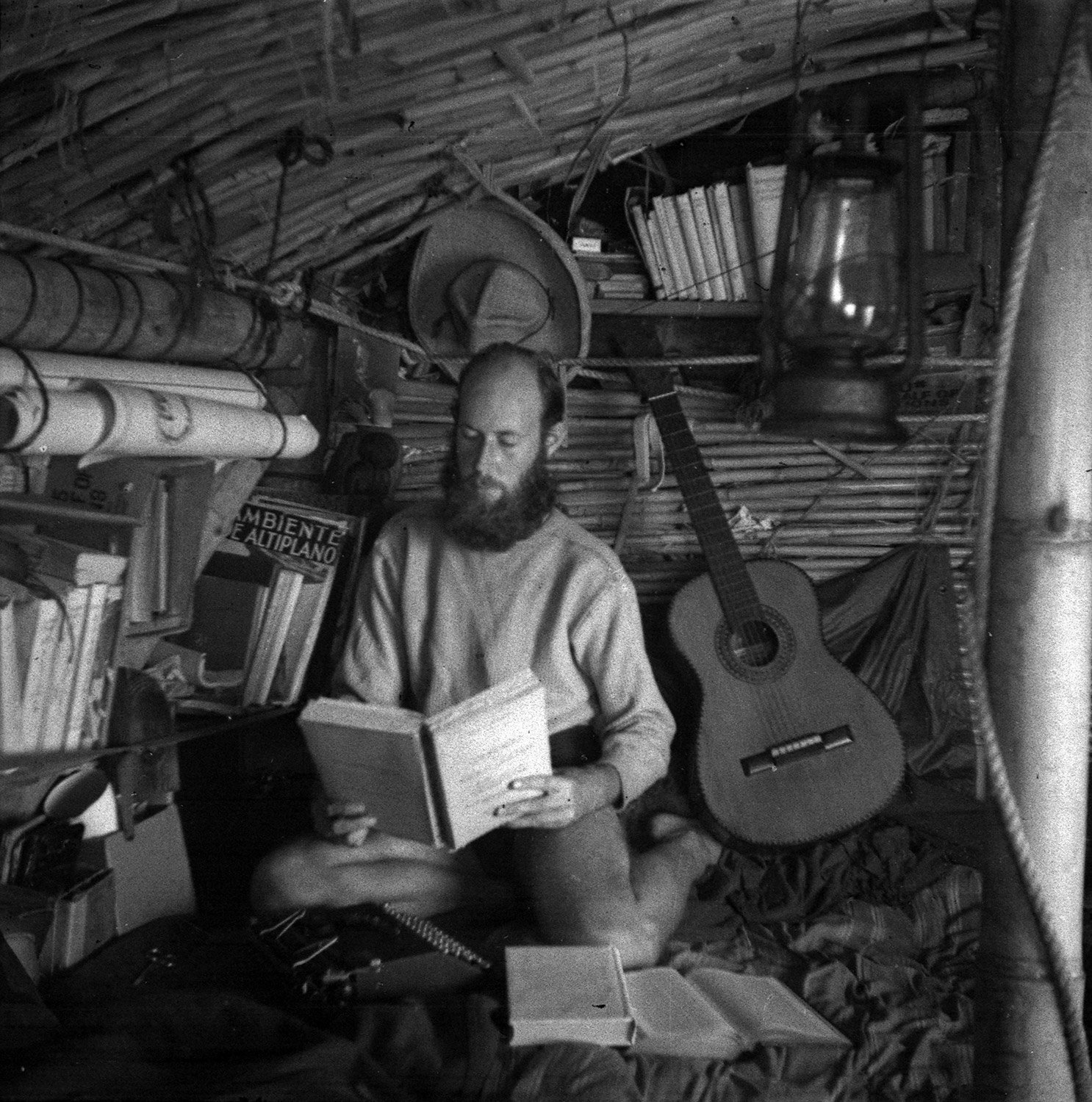
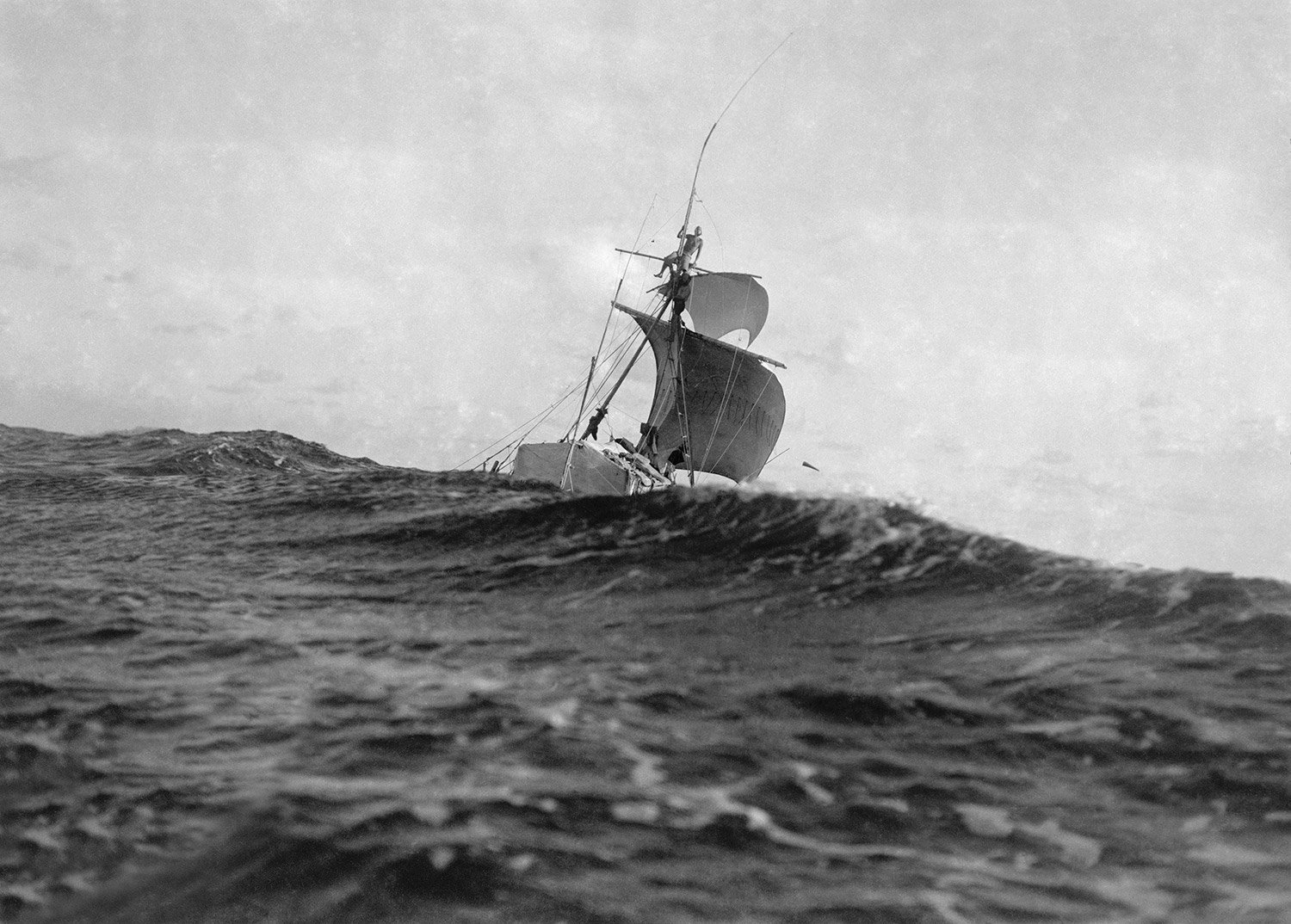

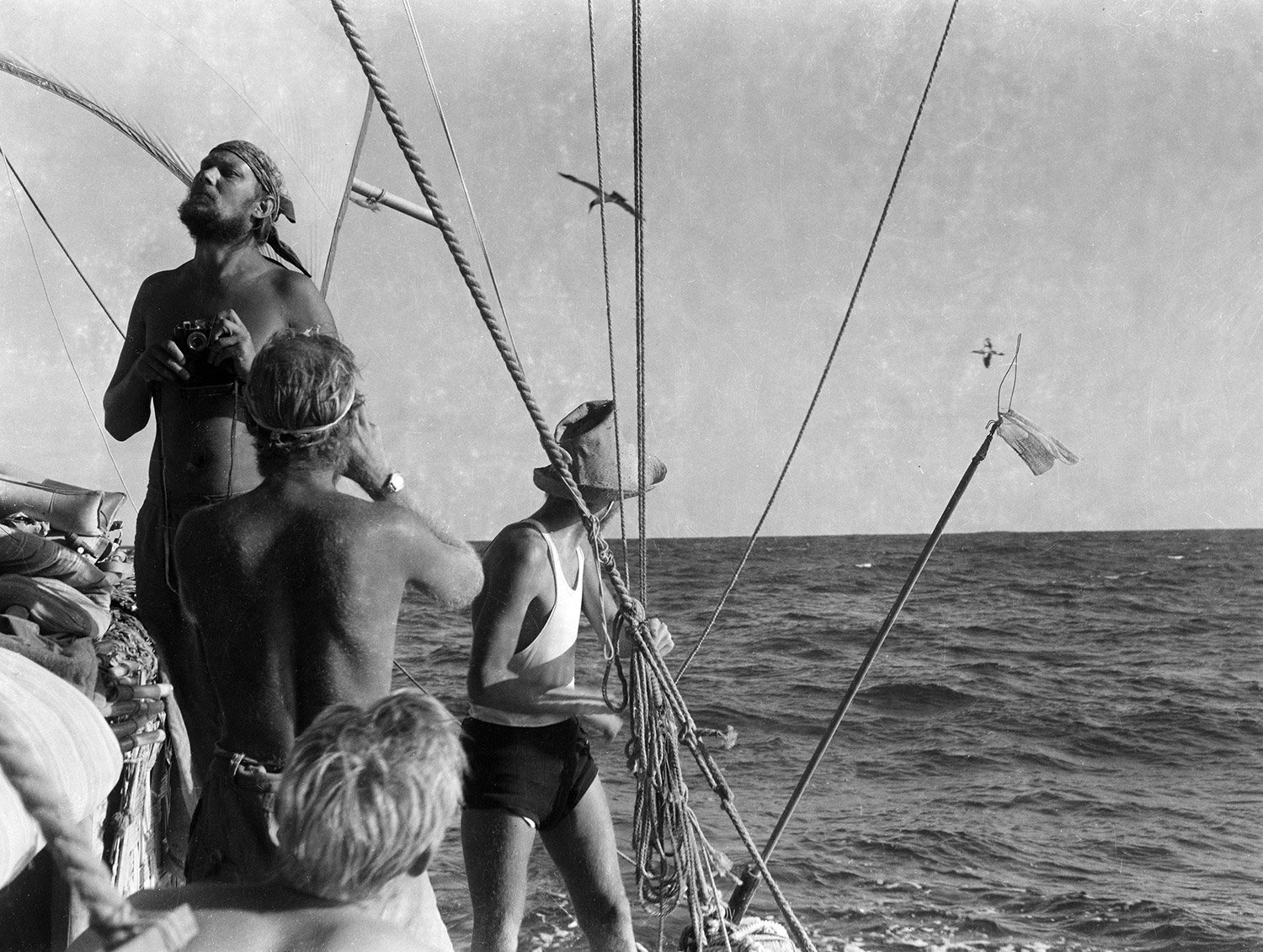
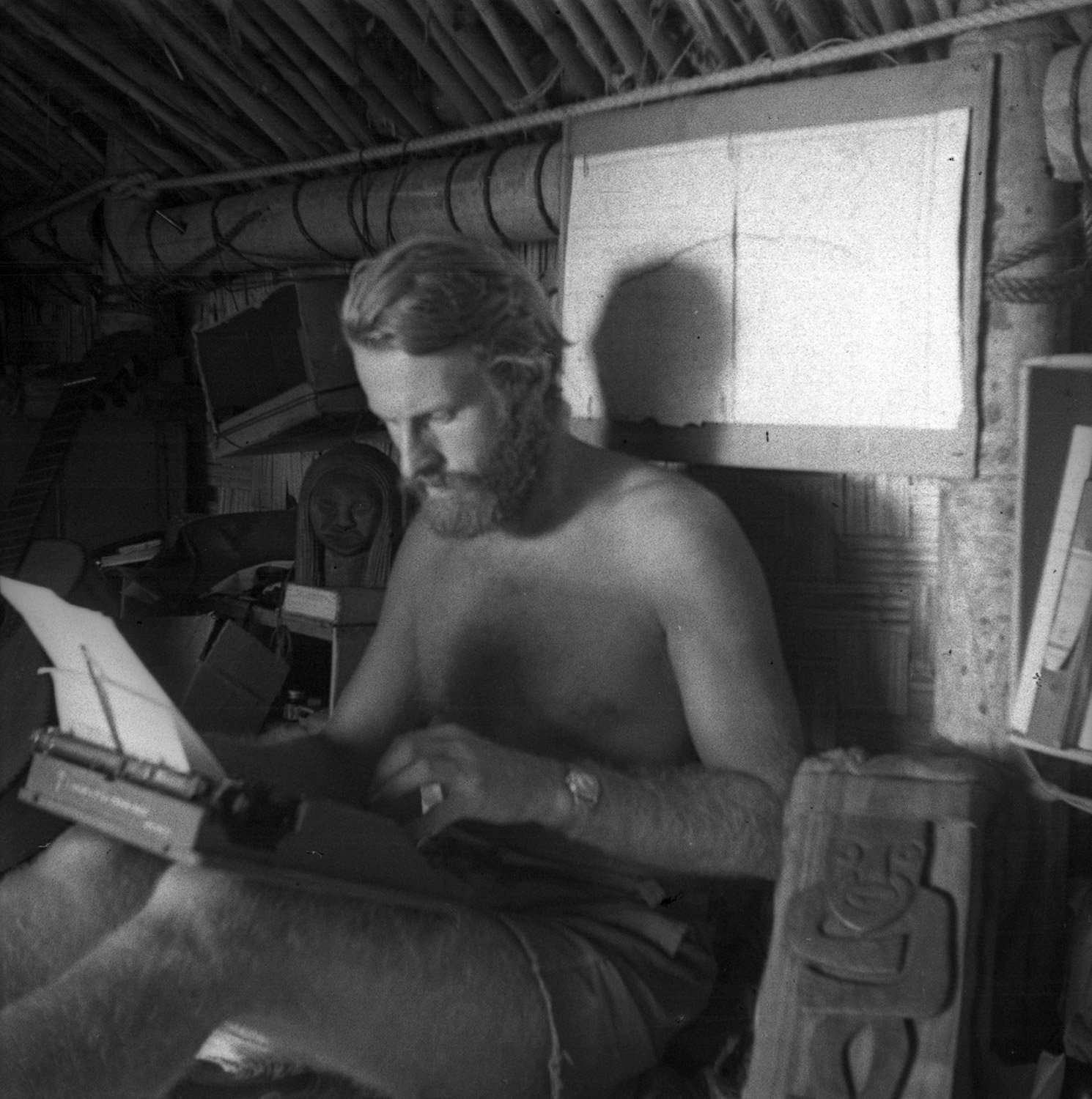
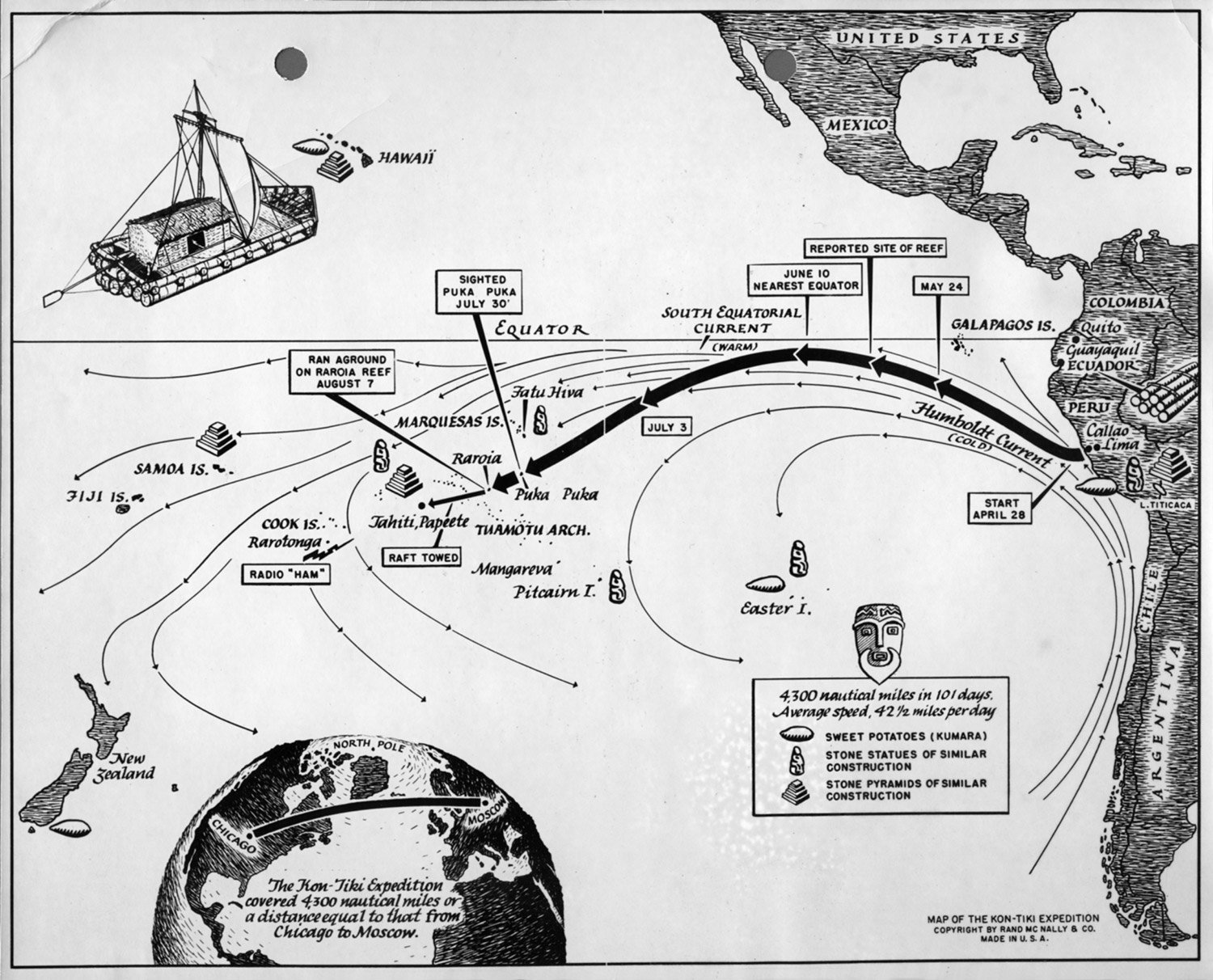
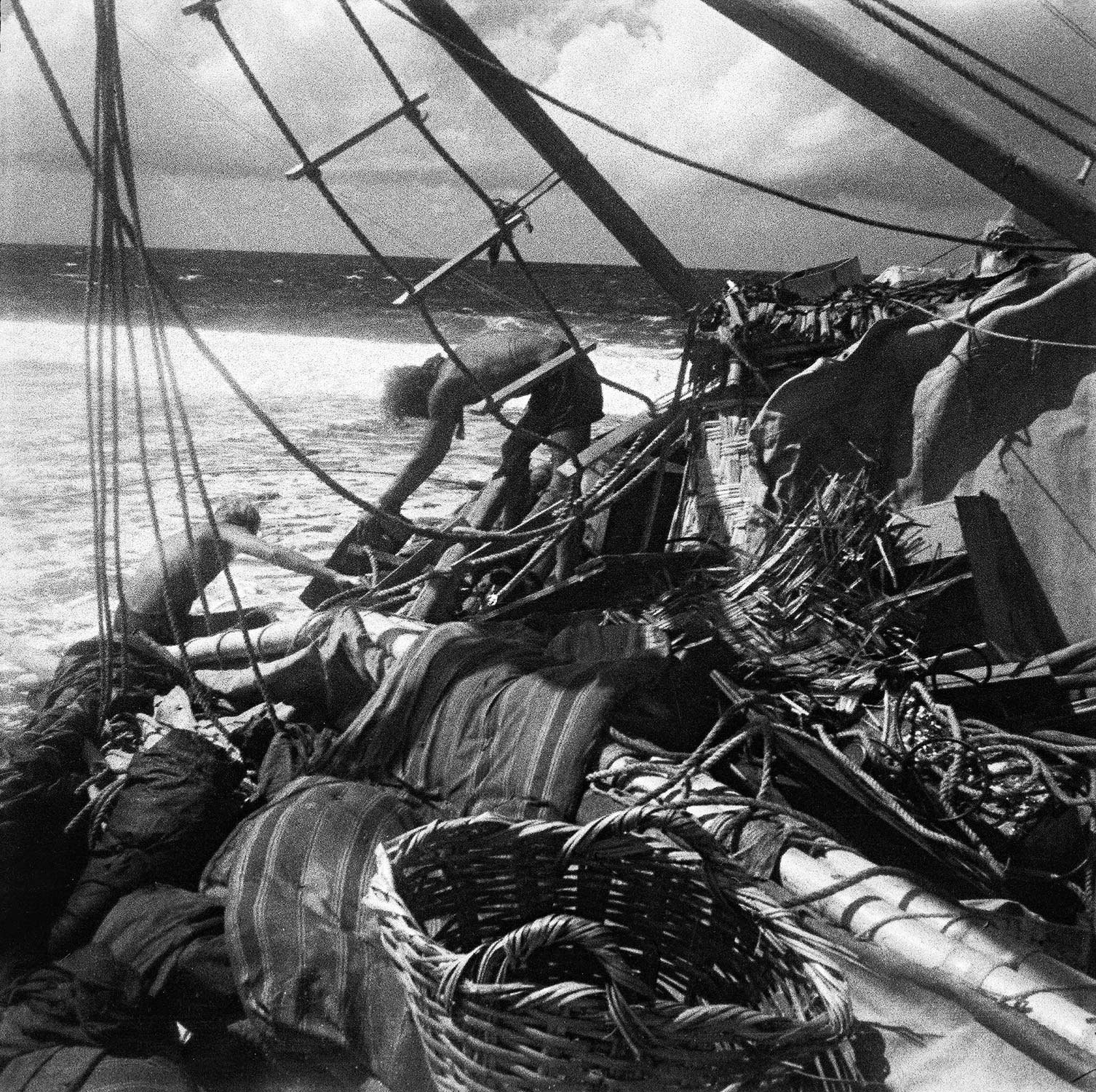
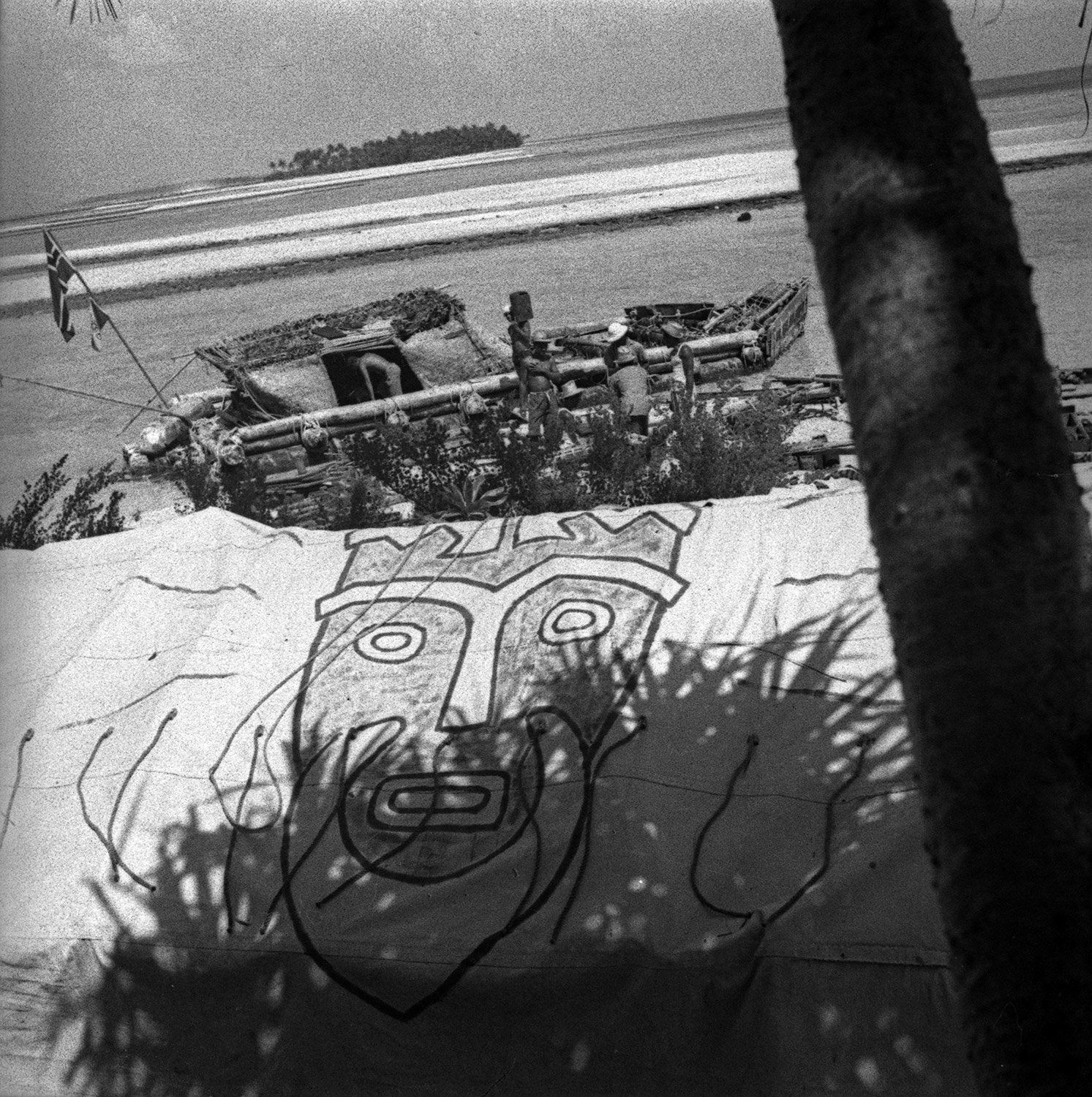
First Heyerdahl had to recruit a crew. This proved relatively easy, and he soon had five well-qualified men on his team. Together they traveled to Ecuador to procure balsa timber for the raft and then on to Peru to build it.
Through personal contacts Heyerdahl corresponded with representatives of the American military and was able to obtain everything from sleeping bags, field rations, suntan lotion and canned goods, to navigational instruments and radio equipment.
Heyerdahl also needed a secretary for the expedition, and Gerd Vold from the Norwegian embassy in Washington quickly volunteered for the job. Among other things she was to coordinate contact between the raft and those on shore.
The crew of the Kon-Tiki raft, from left: Knut Haugland, Bengt Danielsson, Thor Heyerdahl, Erik Hesselberg, Torstein Raaby and Herman Watzinger. Thor’s criteria in choosing crew members were that they all possess unwavering courage as well as one unique qualification, indispensable for the expedition.
Herman Watzinger and Thor Heyerdahl met by mere coincidence in New York. Watzinger was an engineer specializing in thermodynamics, and was in the USA to study cooling technology. He asked to join the expedition, and Thor unhesitatingly said yes. Watzinger was second in command on the Kon-Tiki raft.
Erik Hesselberg was a close childhood friend of Heyerdahl’s. He was a trained sailor and had spent five years in the merchant fleet, and was thus the only member of the Kon-Tiki crew with actual maritime experience. Hesselberg would be navigator on the journey. Hesselberg also had an arts education, and he was the one who painted the fabled Kon-Tiki mask on the raft’s sail.
Knut Haugland had participated as a telegraph operator in the Norwegian heavy water sabotage at Rjukan in 1943, and through a series of dramatic experiences during the war Haugland demonstrated extraordinary resourcefulness and bravery. On the Kon-Tiki’s voyage, he would be the one to save Herman Watzinger from drowning.
Torstein Raaby was cut from the same cloth as Haugland. He was also a radio expert and had spent many months on Finnmarksvidda (the Finnmark plateau) – behind enemy lines – under exceptionally strenuous conditions. Among his accomplishments Raaby had managed to send great quantities of information about the German warship Tirpitz by “tapping” the radio antenna of a German officer.
Bengt Danielsson was an anthropologist at the University of Uppsala. Danielsson had a scholarly interest in Heyerdahl’s migration theory. He sought out Heyerdahl during the preparations for the Kon-Tiki expedition and asked if he could join. Danielsson became the sixth and final member of the expedition – and the only one who could speak Spanish.
Hesselberg had navigational skills, but no one in the group could sail, and they had even less idea how to steer a balsawood raft. Such knowledge had been lost for hundreds of years. Nevertheless, Heyerdahl had faith that the crew would master the raft along the way, and that the easterly winds and the Humboldt Current would in the end carry the Kon-Tiki to Polynesia. Leading experts in anthropology and seamanship considered it highly unlikely that the raft would reach its destination. Some even warned that it would disintegrate within the first two weeks and that the expedition was pure suicide.
The experts were proved wrong
After 14 days at sea Heyerdahl and his crew were confident that the raft was indeed seaworthy. And not just that: their vessel was
“a fantastic seagoing craft,” Heyerdahl wrote in his log.
After 101 days at sea the Kon-Tiki ran aground on a coral reef by the Raroia atoll in Polynesia. The expedition had been an unconditional success, and Thor Heyerdahl and his crew had demonstrated that South American peoples could in fact have journeyed to the islands of the South Pacific by balsa raft.
Heyerdahl’s book, “The Kon-Tiki Expedition” published in 1948, has been translated into more than 70 languages, and tens of millions of copies have been sold to date.
The book is the best-selling book by a Norwegian author ever.
Oscar, 1951
The film—of the same title, shot by the crew during the journey—won the Academy Award for best documentary film in 1951. It is screened continuously at The Kon-Tiki Museum.






